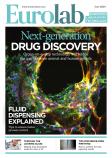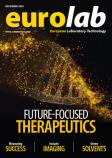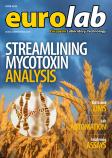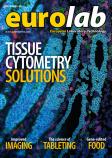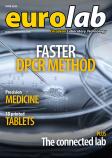INTEGRA has announced a new customer testimonial video that demonstrates how the VIAFLO VOYAGER motorised adjustable spacing pipette can be used to rapidly set up a 384-well qRT-PCR plate for analysis in a ViiA 7 Real-Time PCR system (Life Technologies). Click HERE for more.
Videos
NAFIGATE is proud to present a video where you can watch the birth of nanofibers. This is no animation but real pictures in slow motion. From an initial single drop to hundreds of nanofibers.
The University of Sheffield is continuing to remove the barriers to higher education for people across the world with a new and exciting online dentistry course which is free and accessible to all. Massive Open Online Courses (MOOCs) are transforming education giving everyone the unique opportunity to take part in a high quality, flexible and innovative learning experience.
RSSL is recognised as a leading independent provider of foreign material analysis, contaminant identification and structural analysis of products.
View our You Tube Video on the Science behind Foreign Body Investigations - Food Contamination under the Microscope
Avantes is the leading manufacturer of fiber optic spectroscopy instruments and systems with almost two decades of experience developing customer-defined spectrometer configurations. With a long history of consulting with clients across diverse industries and applications, Avantes is an experienced partner, equipped to guide customers who want a solution tailored to their application and research needs. By building best in class, spectrometers and providing second-to-none customer service, Avantes offers customers the peace of mind that the Avantes solutions they purchase will meet, and exceed, their expectations.
Exeter Analytical has produced a new video that provides an informative introduction to the technique of elemental microanalysis that provides precise determination of percentage Carbon (C), Hydrogen (H) and Nitrogen in a sample.
The use of CHN microanalysis as a routine technique to provide a precise and accurate elemental analysis of a sample is widely accepted across many market sectors worldwide. CHN microanalysis is a powerful and relatively straightforward method for determining whether or not a sample is pure by providing a precise and accurate analysis of a sample's percentage carbon, hydrogen and nitrogen content.
In a new study, researchers at Karolinska Institutet in Sweden show that the scar tissue formed by stem cells after a spinal cord injury does not impair recovery; in fact, stem cell scarring confines the damage. The findings, which are published in the scientific journal Science, indicate that scar tissue prevents the lesion from expanding and helps injured nerve cells survive.
The Mucon Series K Valves have been specifically designed for applications demanding the highest level of hygiene. Aimed specifically at the food and pharmaceutical markets, the Mucon K Valve can be stripped down and cleaned in moments.
The new Acura® electro is making electronic pipetting more versatile, simpler and safer than ever.
Extended range includes seven micro models (0.1 to 1000 µL), three macropipettes (0.1 - 10 mL) and eight multichannel instruments (0.1 to 350 µL).
IBM scientists are collaborating with pathologists at the University Hospital Zürich to test a new proto-type tool to accurately diagnose different types of cancer. This work is based on a technology developed by IBM scientists called a microfluidic probe, which slightly resembles the nib of a fountain pen.
A critical step in the diagnosis of cancer is the analysis of a patient's biopsy tissue sample, which sometimes can be as small as a pinhead. Even with such a small sample, pathologists can test for the absence or presence of tumor cells and provide important information pertaining to the course of treatment to doctors.
